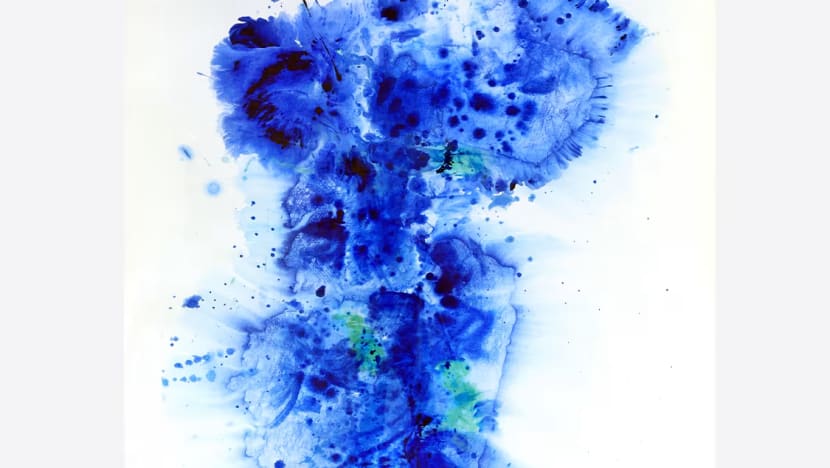This art collector went from running his own marketing firm to opening galleries in Hong Kong and London
Calvin Hui dabbled in buying prints he liked as a student, and started collecting art seriously when he sought to decorate his new home 20 years ago.


This audio is generated by an AI tool.
Read a summary of this article on FAST.
Hong Kong native Calvin Hui always had a keen appreciation for visual arts, especially abstract art. What started as a hobby buying and collecting art that resonated with him, has turned into a lifelong passion. In 2011, he opened 3812 Gallery in Hong Kong, which specialises in Chinese contemporary art, particularly ink works. A few years later in 2018, he and his co-founder opened a gallery in London’s Mayfair, which will be relocating to The Whiteley London this Summer.
Hui reflected on his early days buying art: “The first art piece I bought was a print lithograph by Juan Miro when I was a student. I collected 20th-century modern art, with the small amounts of money I earned from part-time jobs as a student. It has always been my passion.”
When he set out to decorate his new home 20 years ago, Hui was on a quest to find and acquire more art. “In addition to the decorative pieces I've collected earlier, I consider the first ‘serious’ work I bought to be Jar with Horizontal Colour Bars (2005), by an Iranian artist Farhad Moshiri. It is a large piece, measuring 2 sq m. To be honest, I didn't do much research. It fit my budget and matched my home interiors perfectly. That marked the beginning of my journey as a serious collector.”
After his first acquisition, Hui continued to expand his knowledge about art by reading, going to exhibitions, and museums and subsequently attending fairs, thus growing his collection. As Hui’s collection grew, unexpectedly, he received a message from a gallery about one of the artists whose work he had purchased; the value of that artist’s pieces had skyrocketed at auction. This experience deepened his interest in learning more about art and collecting.
Before opening his gallery in 2011, Hui ran his own public relations, events, and marketing company. As his collection grew, he saw an opportunity to showcase the artists’ works in a gallery setting. Hui attributes his gallery success to his skillsets as a communications graduate. “It was a natural progression transitioning from a PR, events and marketing professional to an art business as a gallery owner, curator, dealer and collector,” he said. “My skills and experience have been incredibly beneficial to my art business; the storytelling, introducing artists and connecting with people came naturally to me.”
His foray into the auction market was an organic process that unfolded over several years. He became more involved in the art market beyond just collecting. He described the art scene in Hong Kong during his time as a collector, before opening his gallery in 2011: “It was all very organic. There were no art fairs, no Art Basel, and no established gallery districts in Hong Kong. I had the opportunity to meet with art institutions, get to know the community, and eventually began writing about art collections.”

The works of self-taught Hong Kong artist Thomas Ngan have piqued Hui’s interest. There are plenty of choices in the market and Hui does his due diligence. “Once I collect, I will commit to following the artist’s journey. Visiting exhibitions and art fairs is integral to discovering new talents. I can be quite impulsive, but I usually do my homework before purchasing. I keep my passion for collecting art for my personal collection and at the same time, I want to see how each artist develops their art and the unique artistic ideas and concepts they are trying to convey. Aesthetic quality, craftmanship and techniques are very important.”
Hui’s collection mainly features paintings — ink and Western, most of them focused on Chinese contemporary modern art, along with a selection of European works. Hui believes the rule of collecting is, “leading by the heart first and foremost. Whatever is visually captivating and speaks to you. You need to like it and connect to the artwork, it should bring you joy looking at it, rather than seeing it purely for investment. Art is unique. It’s not just a commodity. The best case scenario is that you appreciate it and see it as a long-term investment, instead of a short-term trade.”













